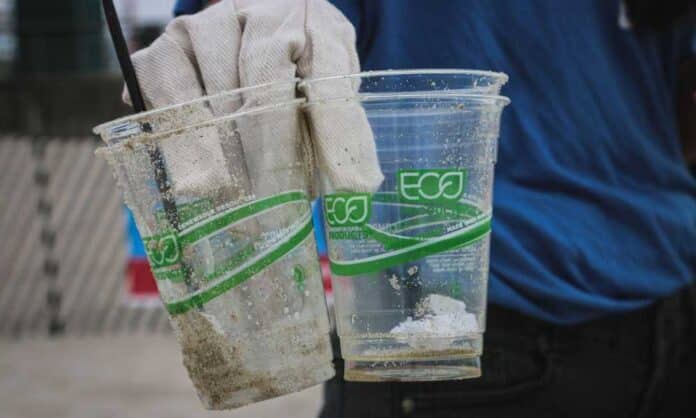What is greenwashing? Greenwashing is a deceptive marketing tactic used by companies to make their products appear more environmentally friendly than they really are. According to TerraChoice, a consulting firm specializing in environmental claims, more than 95% of products claiming to be “green” or “eco-friendly” are guilty of greenwashing. To learn how to avoid greenwashing, it’s important to first understand its damage to both the environment and consumers.
Greenwashing harms the environment and consumers in several ways, including:
- Customer Deception: Misleading consumers into thinking a product is environmentally friendly, but it actually harms the environment.
- Increase in Waste: Promoting products and services that are not sustainable, leading to increase in consumption and waste.
- Decrease in Trust: Undermining genuine sustainability efforts by creating confusion and skepticism among consumers.
To mitigate these harmful effects, it is crucial to develop the skills to recognize greenwashing and make informed choices as a consumer. By doing so, we can help build a more sustainable future and protect our planet from further harm.
How to Spot Greenwashing
Examples of greenwashing
Greenwashing is a pervasive problem in marketing that often goes undetected. False claims, especially, play a significant role in greenwashing. Companies often make misleading statements. Recognizing and questioning these common greenwashing tactics is crucial to combat greenwashing effectively.
- Damaging Practices: A company that uses recycled materials in their packaging but still engages in environmentally damaging practices.
- Unsustainable “Green” Products: A product that claims to be “green” but uses unsustainable production methods or contains harmful ingredients.
- Deceptive Advertisements: An advertisement that shows beautiful natural scenery but promotes a product that has no environmental benefit.
To protect yourself from misleading marketing and make more informed decisions about the products and services you choose to support, it’s helpful to understand the different types of greenwashing that companies may employ. By educating yourself about these examples, tactics, and types of greenwashing, you can protect yourself from misleading marketing and make more informed decisions about the products and services you choose to support.
8 Ways to Avoid Greenwashing
To avoid falling victim to greenwashing, there are several ways to ensure you make informed and sustainable choices as a consumer. Here are 8 ways to avoid greenwashing:
1. Look for third-party certifications and labels
Seek out certifications from trusted organizations such as the USDA Organic label or the Energy Star certification. These labels demonstrate that products or services have been verified by independent organizations to meet specific environmental standards. You can also look for labels from organizations like the Forest Stewardship Council or the Rainforest Alliance for products that use sustainable materials.
2. Avoid products with vague or misleading claims
To avoid being misled by greenwashing, it’s crucial to pay attention to the details and avoid vague or incomplete claims. Labels like “all natural” may sound good for the environment, but they don’t necessarily mean anything specific. Additionally, be wary of products that make vague or unproven environmental claims, such as “eco-friendly” or “green,” which are not regulated and can be used in many different ways. It’s important to look for specific information on a product’s environmental impact. And don’t be fooled by products that are marketed as “eco-friendly” without considering the bigger picture. For example, a product that uses recycled materials may still have a high carbon footprint due to the manufacturing process.
Check out: Omuerta Genetix Seeds: Benefits and How to use them?
3. Do research on the company’s environmental practices
To ensure that the companies you support are truly committed to sustainability, do your research, look into their reputation, and track their environmental practices. Check for evidence that they are taking steps to reduce their impact, and be wary of vague or unsubstantiated claims. Companies with a strong track record of sustainability and transparency are more likely to be trustworthy.
4. Check if the product is truly necessary
Consider whether the product is worth its environmental impact and whether you really need it. Ask yourself if there are alternative products that may be more sustainable or if you can live without the product.
5. Avoid products with excessive packaging
Look for products that are packaged in environmentally responsible materials and that minimize waste. Avoid products that come with unnecessary packaging or that use non-recyclable materials.
6. Research the product’s ingredients or materials
Learn about the materials and ingredients used in a product and consider their environmental impact. Look for products made with sustainable or biodegradable materials, and avoid products that contain harmful chemicals or materials that are non-recyclable.
7. Check if the product has a high carbon footprint
Consider the carbon emissions associated with a product, including its manufacturing, transportation and use. It’s better to select local, renewable energy-based, and carbon-neutral products.
8. Look for independent reviews and feedback
Seek out unbiased reviews and feedback from independent sources to learn about a product’s true environmental impact. Look for reviews from trusted sources, such as environmental organizations or consumer advocacy groups, and avoid reviews that may be biased or sponsored by the company.
Conclusion
In conclusion, we, as consumers, should possess the awareness of greenwashing. Companies often employ misleading tactics to falsely appear environmentally friendly. To protect ourselves, it’s crucial to be vigilant, seeking reliable certifications and evidence of sustainable practices. By making informed, eco-friendly choices, we can contribute to a sustainable future. Together, let’s act and make a positive impact against greenwashing.
Check out: The Basics of Green Marketing Campaigns

